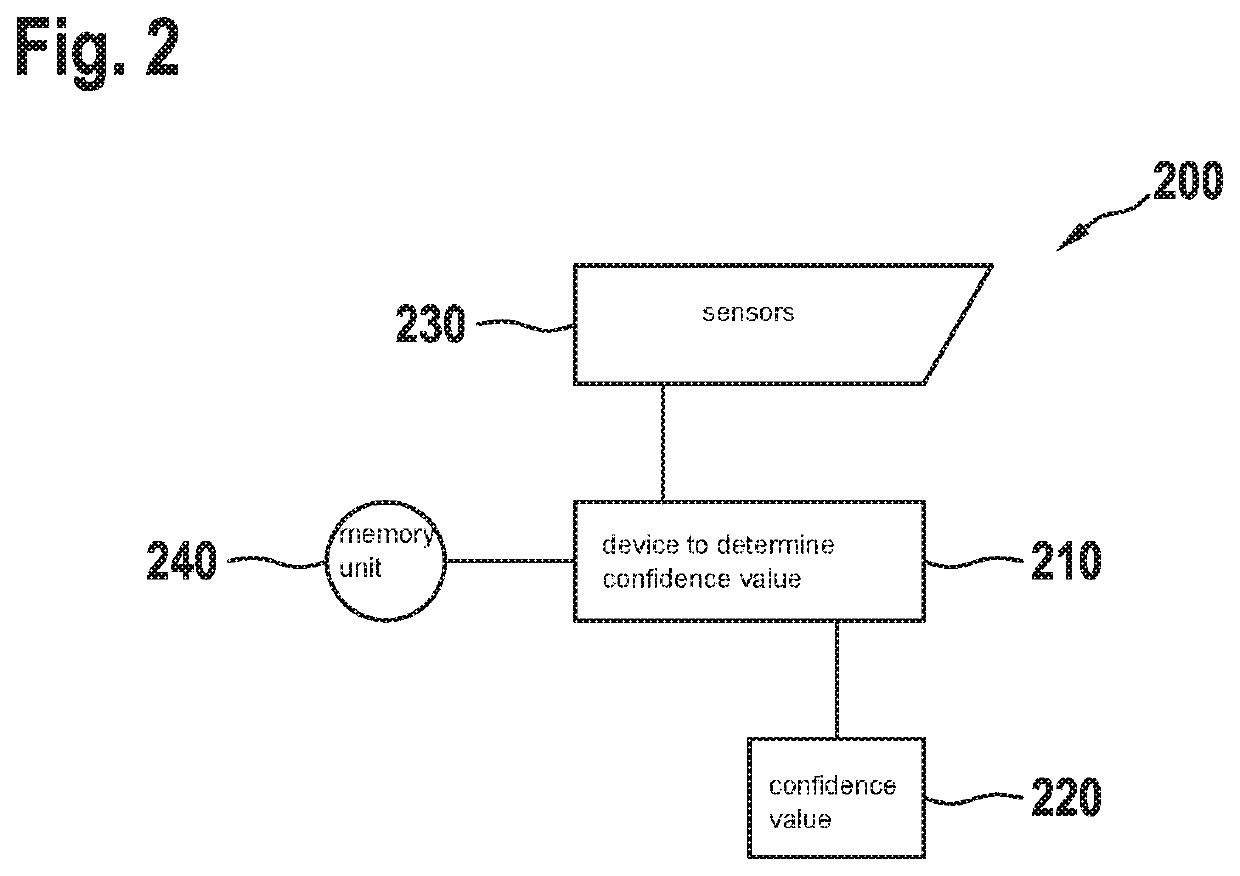Method for determining a confidence value of a detected object
a technology of confidence value and detection object, which is applied in the field of determining the confidence value of detected objects, can solve the problems of only estimating the ability of neural networks to solve specific tasks following training, and modern plausibility checks are normally limited to comparing several
- Summary
- Abstract
- Description
- Claims
- Application Information
AI Technical Summary
Benefits of technology
Problems solved by technology
Method used
Image
Examples
Embodiment Construction
[0077]Exemplary embodiments of the present invention are depicted in FIGS. 1 through 3 and are explained in greater detail below.
[0078]FIG. 1 shows a flow chart of the data streams of an example method in accordance with the present invention.
[0079]FIG. 2 shows an example system having a device that is designed to determine a confidence value in accordance with the present invention.
[0080]FIG. 3 shows the steps of the example method for determining the confidence value in accordance with the present invention.
DETAILED DESCRIPTION OF EXAMPLE EMBODIMENTS
[0081]FIG. 1 outlines a data flow between components for determining a confidence value.
[0082]Neural network 140 is situated in the upper branch of data flow chart 100, which outlines the application case. For this purpose, data, for example from sensors, are provided as input images for the trained neural network 140 from various sources by way of a memory 120 so that for each of the input images neural network 140 is able to provide ...
PUM
 Login to View More
Login to View More Abstract
Description
Claims
Application Information
 Login to View More
Login to View More - R&D
- Intellectual Property
- Life Sciences
- Materials
- Tech Scout
- Unparalleled Data Quality
- Higher Quality Content
- 60% Fewer Hallucinations
Browse by: Latest US Patents, China's latest patents, Technical Efficacy Thesaurus, Application Domain, Technology Topic, Popular Technical Reports.
© 2025 PatSnap. All rights reserved.Legal|Privacy policy|Modern Slavery Act Transparency Statement|Sitemap|About US| Contact US: help@patsnap.com



